Achieving well-defined upper abs isn’t just about aesthetics; it’s also a cornerstone of core strength and stability. If you’re searching for the most effective way to target your upper abdominal muscles, you’ve come to the right place. This comprehensive guide will walk you through the best upper abs workout routines, exercises, and actionable tips to help you reach your fitness goals. Let’s dive in and uncover how to maximize your workouts for upper abs!
Why Focus on Your Upper Abs?
The upper abs, part of the rectus abdominis muscle group, play a vital role in posture, movement, and overall core stability. Strong upper abs not only enhance your physique but also:
- Improve Functional Strength: Core strength supports daily activities like lifting, bending, and twisting.
- Reduce Injury Risk: A strong core protects your spine and reduces the risk of back pain or injuries.
- Boost Athletic Performance: Whether it’s running, weightlifting, or yoga, core strength improves balance and endurance.
By focusing on the upper abs, you’ll build a strong foundation for a healthier, more functional body.
Understanding Upper Abs Anatomy
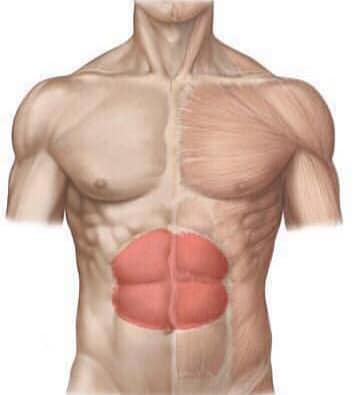 Before jumping into workouts, it’s essential to understand the anatomy of your abs. The rectus abdominis, commonly referred to as the “six-pack,” is a long muscle that runs from your ribcage to your pelvis. While it’s one muscle, you can emphasize the upper portion through targeted exercises.
Before jumping into workouts, it’s essential to understand the anatomy of your abs. The rectus abdominis, commonly referred to as the “six-pack,” is a long muscle that runs from your ribcage to your pelvis. While it’s one muscle, you can emphasize the upper portion through targeted exercises.
Key points about upper abs:
- The upper abs are activated during movements that involve lifting your shoulders off the ground, such as crunches.
- Isolation is limited—you’ll engage the entire rectus abdominis, but certain exercises place more emphasis on the upper region.
Best Upper Abs Workouts
Ready to get started? Here’s a selection of the most effective exercises for upper abs, arranged into a workout plan that targets this area while promoting overall core strength.
1. Basic Crunch
- How to Do It:
- Lie on your back with your knees bent and feet flat on the floor.
- Place your hands behind your head, elbows wide.
- Lift your shoulders off the ground while keeping your lower back in contact with the floor.
- Slowly lower back down.
- Reps and Sets: 3 sets of 15-20 reps.
2. Toe Touches
- How to Do It:
- Lie on your back and extend your legs straight up.
- Reach your hands toward your toes, lifting your shoulders off the ground.
- Hold briefly and return to the starting position.
- Reps and Sets: 3 sets of 12-15 reps.
3. Cable Crunch
- How to Do It:
- Kneel in front of a cable machine with a rope attachment.
- Hold the rope behind your head and crunch forward, engaging your upper abs.
- Slowly return to the starting position.
- Reps and Sets: 3 sets of 10-12 reps.
4. Reverse Crunch with Upper Focus
- How to Do It:
- Lie on your back and lift your legs to a 90-degree angle.
- Curl your shoulders off the ground while simultaneously lifting your hips.
- Lower back down slowly.
- Reps and Sets: 3 sets of 15 reps.
5. Plank to Crunch Combo
- How to Do It:
- Start in a forearm plank position.
- Bring one knee toward your chest in a crunch-like motion.
- Alternate sides.
- Reps and Sets: 3 sets of 10 reps per side.
Key Tips for Effective Upper Abs Training
- Engage Your Core Fully: Focus on controlled movements rather than speed to maximize muscle engagement.
- Breathe Properly: Exhale as you contract your abs and inhale as you return to the starting position.
- Maintain Proper Form: Avoid pulling on your neck or using momentum during exercises.
- Consistency is Key: Aim for 3-4 sessions per week to see noticeable results.
- Incorporate Variety: Rotate exercises to prevent plateaus and keep your workouts exciting.
FAQs: Everything You Need to Know
-
1. How often should I train my upper abs?
For optimal results, include upper abs exercises in your routine 2-3 times per week, allowing for recovery between sessions.
2. Can I target only my upper abs?
While you can emphasize your upper abs, all exercises will engage the entire rectus abdominis to some degree.
3. Do I need equipment for upper abs workouts?
Many effective exercises, like crunches and toe touches, require no equipment. However, tools like cables or stability balls can enhance your routine.


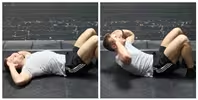
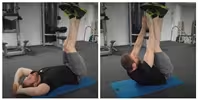
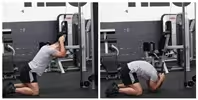
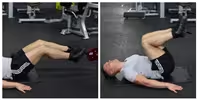

:max_bytes(150000):strip_icc()/6-weeks-to-fitness-for-absolute-beginners-week-2-1230930-3310-e80d07fed9824bd6b59e60ace29b13e9.jpg)
